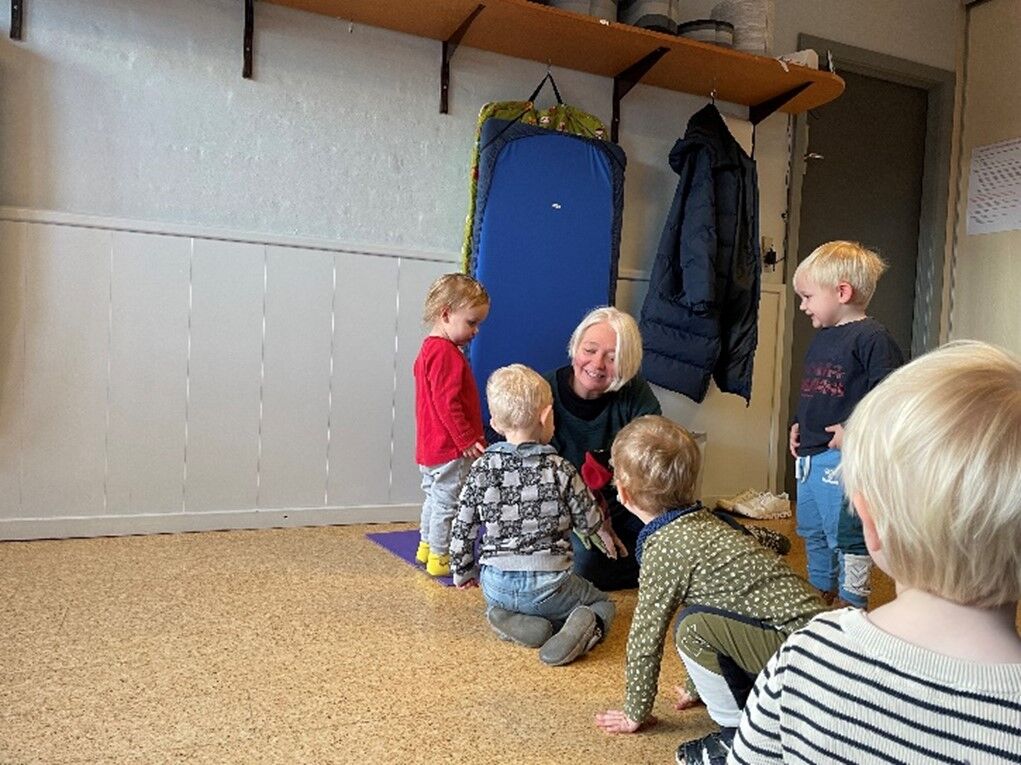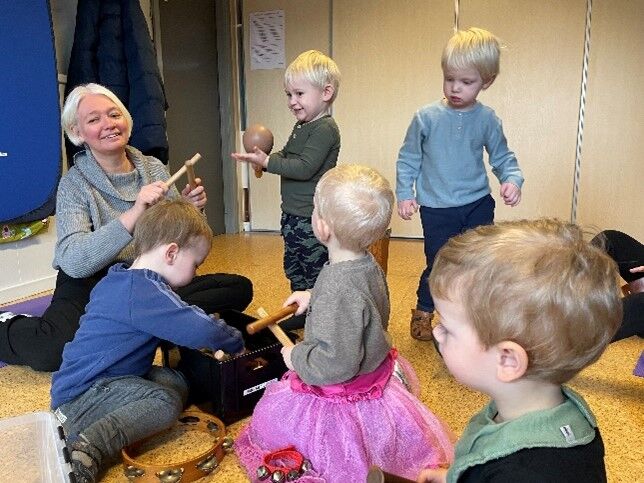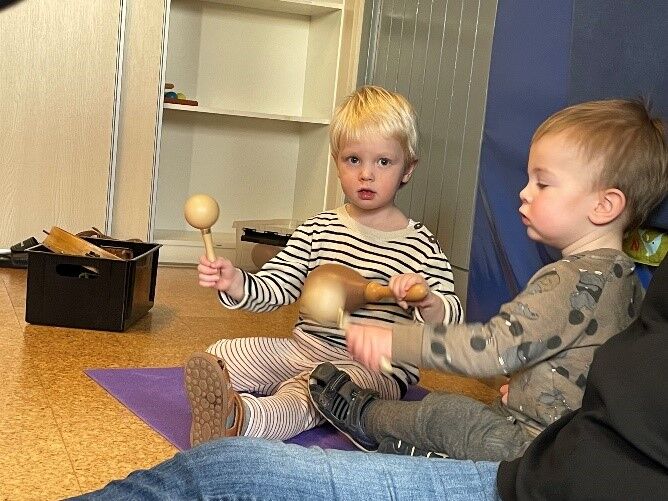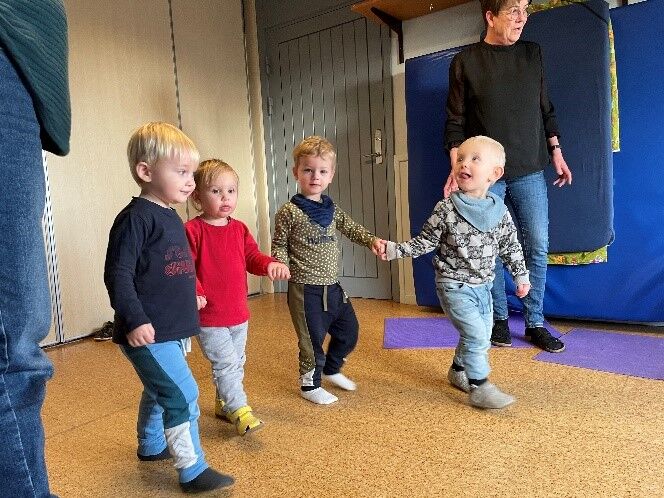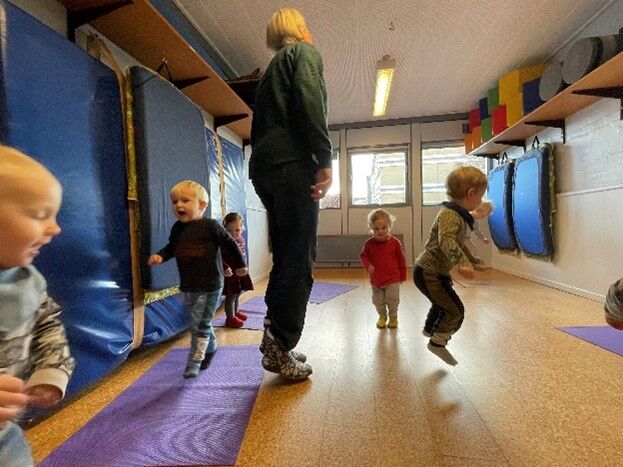MUSIC, CO-CREATION, AESTHETIC PROCESSES, COMMUNITY, DANCE
REGION: South
MUNICIPALITY: Esbjerg
PROCEDURE: 2022
DAY OFFER: Fyrparken
Help questions:
How have you experienced the co-creation between artist/cultural educator/cultural school teacher, educators and children
It has been a good collaboration where there has been room to be curious and reflective.
There has been room in the group to plan ahead. There has been good feedback from the artist, natural and safe dialog with Mette. In collaboration with Mette, the group has come up with ideas for how to plan for the future.
The children have contributed a lot, especially team 2 - the slightly older children. The other group has also contributed with their experience in relation to body language and recognizability.
The starting point for both teams was the same, but group 1 was ready to develop the process sooner due to their age.
How have children's perspectives been expressed/included?
Very much so. It's important to see the little kids' input. We follow the children's lead.
In the large group, the children "steered" the course. Again, the children's tracks were followed. The children have shown a desire for movement. There has been room for an improvisational approach. The children show a desire to move to music.
Comment from Lau (2.5 years): Can I have some music, please.
The moonlight tour has been a huge hit with all the children.
Do the children play different games and with different people than they usually do?
The moonlight ride has been implemented in the room and the other children from the room have been introduced to it.
The bear with the camera has become a game. The children narrate and improvise around the telling of the story.
The elephant and butterfly song has been adopted by one of the little ones who has not been part of PlayArt.
The child learned it from one of the other children from LegeKunst. The song has been shared with the rest of the group.
The song focuses on attention and the children move according to what happens in the song.
The children play new and different games. The rocking song creates new relationships in the group. New ones are chosen.
How do educators act differently than they did before the program?
Classical music is put on in the living room and the children move to the music and enjoy it.
Some parents have been introduced to it and use it at home too.
Eye opener: Experience has shown that you can be more hesitant to follow the children's lead.
Become aware of the children's bodily movements that relate to some of the well-known songs.
The children have gained confidence and self-esteem.
It is important that we are persistent in everything that works. The adults are co-players and not always the "coach".
Improvisational approach. Staff are prepared but continue to follow the children's lead if they show they want to go in a different direction.
The reflection of the process has been good and provides inspiration for preparation and planning for next time.
What has it been like to work with action learning?
Post-action reflection and evaluation has been important and makes a big difference.
With good planning, PlayArt will continue to succeed.
To the artist/cultural educator/cultural school teacher, if present: What have you gained from participating in LegeKunst?
Surprised at how much the nursery children can contribute. The effect has been good, possibly because the program has been twice a week. It has been a success.
The children have had a voice in co-creating the process.
Good and positive experience that it has been kindergarten children.
The collaboration has been good with the staff and knowledge has been shared and inspired.
What are educators still/now curious about?
Spread the word to other staff and get their input. Try it out with new groups of children.
Try out other activity options. A week with more academic content.
How will you use art, culture and aesthetic processes in the future?
One wish is for it to continue in the room we already use.
All the tools for the course are in the lockers in the room and there is free access to use the materials.
Provides inspiration and encouragement to experiment with play.
What points of attention do we need to take forward?
It is important that the children know the room they will be in beforehand. That the children know each other.
An experimental approach is important to create the creative space where children dare to be brave. Adults need to have an open approach and embrace children's ideas and see their motivation for participation.
Children should feel seen and heard.
Focus on being more in the child's perspective, and mentalizing the emotion of the child, in the situation. It was evident in the painting and music processes that the children were expressing more emotion in expression than we have previously worked with.
The experience and curiosity that the staff experienced in this has been brought into the professional assessments in other situations with the children.
A little girl who is always reticent in new things, showed the same in PlayArt, however she was quicker to immerse herself, and gave emotionally much more in the processes than we usually see. Her empathy, seemed more authentic than we usually experience.
A few weeks after the last process in play art, she had to quit and go to school. The end was difficult for her and the staff chose to let her help decide where to say goodbye and sing to her, which she agreed to and was happy and a bit involved in the process. She certainly hadn't been in the past.
The adult was present in supporting and not in guiding and instructing. The girl felt the frame and dared to be in it, both in the PlayArt project and in her own completion.
To stand out, and be able to be in it, with your own empathy and way of dealing with the situation in a safe setting.
Empathy, motivation and a safe framework, without an instruction gives adults a new perspective and renewed curiosity in working with the child, both with and without art in everyday life at Children's House Ellebæk.
click on the picture to see a larger version


